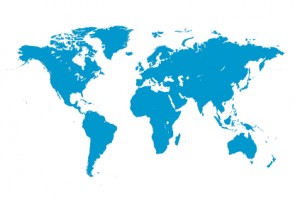 By Ian Hobkirk
By Ian Hobkirk
Managing Director of Commonwealth Supply Chain Advisors

This post is the second in a series of three blogs on supply chain network optimization. The first discussed ways to properly prepare for a network optimization to drive a faster project timeline and more accurate outputs. In this post, I will focus on concepts to consider and mistakes to avoid as your company develops and runs your model. The next installment will cover ongoing use of your model for continuous optimization.
Execution
1. Spend time with future demand projections: The biggest variable in any supply chain network optimization is usually the demand volume. Using a single demand projection by product, channel and region mix is often a gross oversimplification, as is using next year’s annual operating plan. In reality there are usually too many variables to estimate, and because each of these variables can influence the overall cost in a big way, ranges of volume should be tested within the product/channel subsets. Optimizing using demand ranges provides a clearer picture of cost curves and the levers that influence costs.
2. Validate the data assumptions that the modelers have to make: Every analysis requires filling in some missing data gaps. The goal is to have all of these assumptions be benign and directionally correct. The project’s executive sponsors should be aware of all assumptions which have been incorporated into the model.
3. Get real world inputs: Many times a study requires key cost and location inputs in new service areas. Understanding the flow of goods, and the cost of real estate, labor, taxes, incentives and other factors when looking to expand into new regions is integral to making a good long-term decision.
4. Avoid only ‘optimizing’ a portion of the supply chain network: Any study that doesn’t look at the full flow of goods and total costs might be adding costs or service time when it is intended to achieve the opposite. A total cost perspective is vital.
5. Ensure that customer service time is a central part of the discussion: When deep in the trenches of a data exercise, it can be easy to forget that the reason your company needs distribution centers at all is because customers want products faster than they can be produced to order. If this isn’t one of the first discussion points with the modeling team then this point can get lost in the effort to reduce costs.
6. Take a hard look at cost sensitivity of the ‘best’ network: There should be two primary concerns with sensitivity: testing different demand sets and running sensitivity analysis against a given demand set. Some tools are particularly good at taking advantage of the embedded sensitivity capability which allows users to easily perform sensitivity analysis as a standard process step.
7. Don’t include non-activity-based fixed costs in the model: As the model is constructed, often the real costs that are meaningful to the optimization are activity-based costs. For this reason many standard fixed costs are correctly left out of the model and added back only when comparing the total costs of each potential scenario.
8. Do not ignore seasonal effects: The most accurate way to handle seasonality is to model each season separately, which results in a network plan that best matches seasonal demand throughout the year.
Stay tuned to read about ways to ensure your supply chain network model can be used for ongoing optimization. For a more in-depth view of these points, read the whitepaper: Supply Chain Network Optimization – Three Ways To Avoid a Project Mishap.
